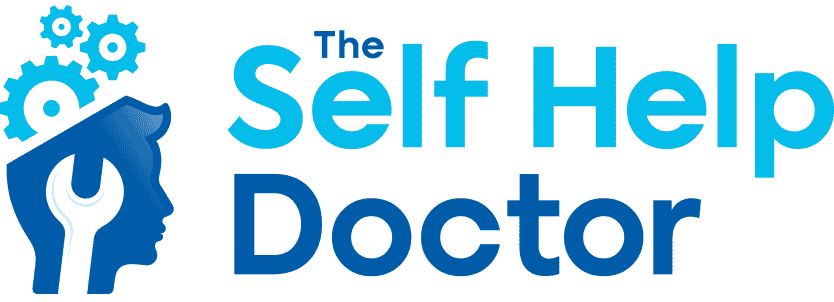Emotional Eating: Your Brain’s Survival Mechanism, Not a Sign of Weakness

Emotional Eating: Your Brain’s Survival Mechanism, Not a Sign of Weakness
Stress eating isn’t about willpower—it’s about survival mode. Your brain is simply trying to protect you, not punish you. Understanding emotional eating as a survival response rather than a weakness can transform how you manage it. With the right tools, like CBT techniques, you can regain control and find balance. Ready to take the first step? Explore our free mini-course and learn how these techniques can help manage emotional eating today!
Emotional Eating as Survival

Brain’s Protective Mechanism
The brain is wired to protect us, and emotional eating is one of its many protective mechanisms. This phenomenon occurs when the brain perceives stress or strong emotions as threats, triggering a need to seek comfort. Eating releases endorphins, providing temporary relief from emotional distress.
Emotional eating is linked to the brain’s reward system, specifically dopamine release, which reinforces the behavior. Over time, this can form a habitual response to stress. Understanding this mechanism helps reframe emotional eating from a personal failing to a survival response.
In stressful situations, the body’s fight-or-flight response is activated. Eating can serve as a grounding activity, providing physical and emotional comfort. Recognizing this pattern is crucial in developing strategies to manage emotional eating effectively.
To address emotional eating, it’s important to identify underlying emotional triggers. By doing so, individuals can begin to create healthier coping mechanisms, reducing reliance on food for emotional relief. 🌟
Stress and Emotional Triggers
Stress and emotional triggers are primary catalysts for emotional eating. When faced with stress, the body’s cortisol levels rise, increasing appetite and cravings for high-calorie foods. This physiological response is deeply ingrained, often leading to emotional eating.
Common emotional triggers include anxiety, loneliness, and boredom. During these times, food serves as a temporary distraction or comfort. Understanding these triggers is vital for managing emotional eating effectively.
Identifying emotional patterns can help break the cycle. Keeping a journal to track emotions and eating habits can reveal patterns and triggers. This awareness is the first step toward developing healthier coping strategies.
Replacing emotional eating with healthier responses can be challenging but rewarding. Techniques such as mindfulness, physical activity, or engaging in hobbies can redirect attention away from food. 🌟
Understanding Emotional Eating

Natural Response, Not Weakness
Emotional eating is often misunderstood as a lack of willpower or discipline. However, it is a natural and instinctive response to emotional distress. Recognizing it as a survival mechanism can shift perspectives and lead to more effective management strategies.
Instead of viewing emotional eating as a personal failure, it’s helpful to see it as a signal that the body and mind are seeking equilibrium. This shift in mindset can reduce feelings of guilt and shame associated with emotional eating.
Acknowledging that emotional eating is a common human experience can foster self-compassion. Self-awareness and understanding help pave the way toward healthier coping mechanisms.
Building resilience against emotional eating involves developing alternative strategies for emotional regulation. By focusing on emotional health, individuals can create a balanced relationship with food. 🌟
Misconceptions About Willpower
A common misconception about emotional eating is that it stems from a lack of willpower. This belief is not only inaccurate but also detrimental, as it can lead to feelings of shame and inadequacy. Emotional eating is a complex behavior influenced by various psychological factors.
Willpower alone is often insufficient to combat emotional eating. Understanding the underlying emotional and psychological triggers is crucial for developing effective management strategies.
The belief that willpower is the sole solution overlooks the importance of emotional regulation and coping skills. It is essential to address the root causes of emotional eating rather than focusing solely on self-control.
Developing emotional resilience involves learning and practicing healthy emotional coping strategies. Techniques such as mindfulness, therapy, and self-help courses can empower individuals to manage emotional eating effectively. 🌟
Managing Emotional Eating

Introduction to CBT Techniques
Cognitive Behavioral Therapy (CBT) offers practical techniques for managing emotional eating. CBT focuses on changing patterns of thinking and behavior, making it an effective tool for emotional regulation.
-
Identify Negative Thought Patterns: Recognize and challenge thoughts that trigger emotional eating.
-
Develop Alternative Coping Strategies: Replace emotional eating with healthier activities such as exercise or mindfulness.
-
Practice Mindfulness: Increase awareness of emotional and physical cues related to eating.
CBT techniques encourage self-reflection and adaptability, helping individuals gain control over emotional eating. By understanding the connection between thoughts, emotions, and behaviors, CBT empowers individuals to make positive changes.
Incorporating CBT techniques into daily life can lead to long-term improvements in managing emotional eating. With practice, these techniques become intuitive, fostering a healthier relationship with food. 🌟
Benefits of Self-Help Courses
Self-help courses offer structured guidance for managing emotional eating. These courses provide flexibility, allowing individuals to learn at their own pace. The self-paced nature of these courses encourages continuous learning and adaptation.
Self-help courses can integrate CBT techniques, offering tools to identify and challenge emotional eating patterns. Participants gain insights into their behaviors and develop practical skills for emotional regulation.
Engaging in a self-help course can boost confidence and empower individuals to make lasting changes. Community support, often available in these courses, provides encouragement and accountability.
The ability to access resources and exercises independently enhances the learning experience. Participants can tailor their journey to suit personal needs, leading to more effective management of emotional eating. 🌟
Explore our free mini-course to take the first step toward managing emotional eating with CBT techniques. 🌟




